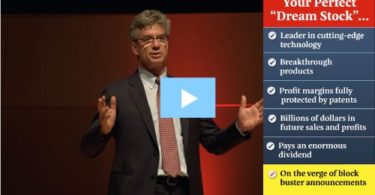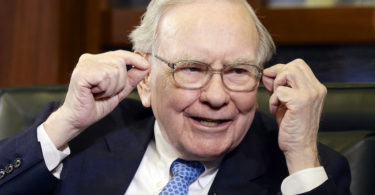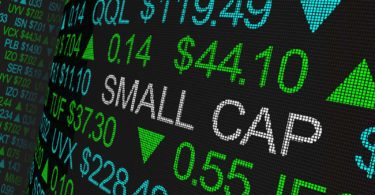Company Overview
Assembly Biosciences (NASDAQ: ASMB) is a small-cap biotechnology company focused on developing antiviral therapeutics for serious viral diseases (e.g. hepatitis B, hepatitis D, herpes viruses). It is a clinical-stage firm with no marketed products yet, but it has multiple candidates in early trials and a high-profile partnership with Gilead Sciences ([1]) ([2]). In contrast, Bausch Health Companies (NYSE: BHC) is a diversified pharmaceuticals and medical products company (formerly Valeant Pharmaceuticals) with a large portfolio of drugs (e.g. gastroenterology treatments like Xifaxan) and a majority stake in eye-care spinoff Bausch + Lomb. BHC generates substantial revenue (over $9.6 billion in 2024 ([3])) but is burdened by legacy debt from past acquisitions. The vastly different scales and profiles of ASMB and BHC set the stage for a compelling comparison – with ASMB positioned as a nimble biotech poised for a potential breakthrough, versus BHC as a leveraged turnaround story.
Dividend Policy & Yield
Neither ASMB nor BHC currently pays any dividend. Assembly Biosciences has _never_ declared or paid dividends and explicitly does not anticipate paying any in the foreseeable future ([4]). This is typical for a development-stage biotech that reinvests capital into R&D and has no earnings. Bausch Health likewise offers no dividend payout – in fact, its last cash dividend was back in 2010 (under its predecessor company) ([5]). Ever since its debt-fueled expansion and subsequent restructuring as Bausch Health, the company has focused on reducing leverage rather than returning cash to shareholders. With both companies lacking a dividend, investors are clearly looking for value via capital appreciation rather than income.
Leverage & Debt Profile
Assembly Biosciences carries virtually no debt. The company has financed its operations primarily through equity raises and collaborations since its 2010 IPO ([4]). As of year-end 2024, ASMB held about $112.1 million in cash, equivalents and marketable securities, thanks in part to recent partnership funding ([6]). Notably, Gilead’s strategic collaboration has provided a major cash infusion – Gilead paid $84.8 million upfront in late 2023 and made additional equity investments (raising its stake to 29.9%) in 2024 ([1]) ([2]). This extended ASMB’s cash runway into mid-2026 ([6]) ([2]). With essentially zero financial debt on its balance sheet, Assembly’s “leverage” comes mainly from its commitments to R&D spending. The absence of debt means no interest burden, but the company will eventually need to raise more funds (or receive milestone payments) if its pipeline doesn’t begin generating revenue by the time cash runs low.
Bausch Health, by contrast, is highly leveraged. It ended 2024 with roughly $20.4 billion of total debt outstanding ([7]) – a legacy of its aggressive acquisition spree in the Valeant era. BHC has been gradually paying this down (debt was about $21.0 billion a year earlier) ([3]), but the absolute debt load remains enormous relative to its ~$2.7–3 billion equity market capitalization. The debt is a mix of secured and unsecured loans and bonds, and critically, major maturities loom: about $2.37 billion comes due in 2025, and over $6–7 billion each matures in 2027 and 2028 ([7]). These large 2027–2028 maturity “walls” present a refinancing challenge. Bausch has indicated it is exploring capital market options (even potentially pledging some of its Bausch + Lomb stake as collateral) to address the maturity profile ([3]). The company’s ability to roll over or refinance these obligations will be pivotal to its survival and shareholder value. In sum, ASMB’s balance sheet is light and mostly equity-funded, whereas BHC carries a heavy debt burden that dominates its financial strategy.
Coverage & Financial Stability
Despite its debt, Bausch Health is currently generating enough cash flow to cover interest costs, albeit with a modest safety margin. In 2024, Bausch’s interest expense was about $1.39 billion ([3]). By comparison, its adjusted EBITDA (a proxy for cash operating profit) was about $3.31 billion for the year ([3]). This implies an interest coverage ratio on the order of ~2.4× – meaning EBITDA is roughly 2.4 times the interest obligations. While that coverage is acceptable for now, it doesn’t leave a lot of room for error if earnings were to decline or interest rates were to rise further. The company did achieve slight GAAP profitability in late 2024 (Q4 net income was $93 million) but still posted a small net loss of $46 million for full-year 2024 ([3]). Essentially, BHC is treading water – servicing its debt and maintaining operations, but not yet producing meaningful net profits due to heavy interest and other expenses. Any operational hiccup or unexpected expense could stress its ability to meet debt covenants or refinancing needs, which is why management remains focused on debt reduction and cost control. Notably, the company had about $1.18 billion in cash on hand at 2024’s end ([3]), which provides some liquidity buffer but is small relative to its looming debt repayments.
For Assembly Biosciences, traditional interest coverage metrics don’t apply (with no debt, there’s no interest to cover). Instead, the key “coverage” consideration is cash burn and runway. The company’s net loss in 2024 was $40.2 million ([6]), which was an improvement from a $61 million loss in 2023 as collaboration revenues grew. R&D and operating expenses are expected to continue outpacing any near-term revenue, so ASMB essentially relies on its cash reserves and partner funding to “cover” its ongoing R&D spending. With ~$112 million in liquid resources and an operating burn rate on the order of $40–60 million per year, the current funds are projected to sustain operations into mid-2026 ([6]). This relatively healthy runway (about 1.5–2 years from the start of 2025) means Assembly is not in immediate financial distress. However, its stability is contingent on hitting R&D milestones that could trigger more partnership payments or allow raising capital on favorable terms before the cash runs out. In summary, ASMB’s financial stability is tied to its cash runway and prudent expense management, while BHC’s is tied to managing debt service coverage and refinancing risk.
Valuation & Comparable Metrics
The starkly different profiles of these companies are reflected in their valuation multiples. Assembly Biosciences trades at a high valuation relative to its current fundamentals – essentially pricing in future potential. At recent prices, ASMB’s market capitalization is around ~$180–200 million, which equates to roughly 6–7× its 2024 revenue (${28.5}$ million from R&D collaborations) ([6]). In other words, the stock trades at 6.6× price-to-sales (P/S) based on last year’s tiny revenues ([8]). It also has no earnings (negative $5.58 EPS for 2024), so a traditional P/E is not meaningful ([8]). The high P/S multiple reflects investors’ expectation that ASMB’s pipeline (and especially its Gilead partnership) could yield significant future revenue – far beyond the small collaboration payments so far. Effectively, the market is valuing Assembly on clinical prospects and potential milestone/royalty streams rather than on current or near-term financial performance.
Bausch Health, on the other hand, appears cheap by conventional multiples – but for good reason. BHC’s stock trades around the high-single-digits, giving an equity market cap near $3 billion ([9]). Against $9.63 billion in 2024 revenue ([3]), that’s only about 0.3× price-to-sales ([8]). Even considering its enterprise value (which adds ~$20 billion of debt), the EV/Sales is ~2.4× and EV/EBITDA roughly ~6–7× – still fairly low for a large pharma business. The company’s P/E ratio is not very meaningful; using 2024’s tiny net loss, the trailing P/E is negative, and even on an adjusted basis (excluding certain charges) the earnings yield is low. This discounted valuation signals the market’s skepticism toward Bausch. Investors are essentially saying that BHC’s heavy debt and future risks offset the value of its assets. In fact, one can argue the sum-of-the-parts is worth much more than $3 billion – for example, BHC owns ~80% of Bausch + Lomb Corporation (an ophthalmology company) which alone is valued around $5–6 billion at market ([9]). However, the overhang of $20+ billion debt means much of that asset value accrues to creditors. Thus, BHC’s ultra-low P/S multiple is a reflection of its leveraged balance sheet and constrained equity value, whereas ASMB’s rich multiple reflects option value on a successful drug discovery outcome. The contrast underscores why ASMB might “explode” (if its drug candidates succeed) while BHC’s upside is capped unless it can dramatically deleverage.
Risks, Red Flags & Challenges
Assembly Biosciences – Pipeline and Funding Risks: As a clinical-stage biotech, ASMB faces the classic high risk/high reward scenario. The company’s entire value rests on the success of its drug pipeline, and clinical trial setbacks are a major risk. Any failure to demonstrate efficacy or safety in its ongoing trials (for hepatitis B, hepatitis D, herpes, etc.) could devastate the stock. In fact, Assembly’s history includes strategic pivots after disappointments – for example, in late 2020 it wound down its microbiome-based drug program to refocus on antivirals for HBV ([10]). That move followed mixed results and delays in the microbiome portfolio, highlighting that not all of its R&D initiatives bear fruit. The current antiviral programs could face similar hurdles; there is no guarantee that early-stage positive data will translate into successful Phase 2/3 outcomes or approvals.
Another risk is dependence on Gilead Sciences as a partner. The Gilead partnership has been hugely beneficial in funding Assembly (providing over $100 million in upfront and equity investments ([1])), but it also means Assembly’s fate is somewhat intertwined with Gilead’s decisions. Gilead has the option to “opt-in” to Assembly’s programs after proof-of-concept, by paying $45 million per program and then potentially up to $330 million in milestones per program (plus royalties) if those candidates progress ([1]). If Gilead chooses not to opt in on a program (e.g. because data are underwhelming or strategic priorities change), Assembly would need to find alternative funding or partnership to advance that program. Conversely, if Gilead does opt in and eventually commercializes a therapy, Assembly will likely cede a lot of control (in exchange for milestone payments and royalties). There’s also a longer-term question of whether Gilead might acquire Assembly outright; while that could be an upside event for shareholders, it might happen at a price that undervalues the full long-term potential. In the meantime, dilution risk is present – Assembly may need to raise more capital by 2026 if milestone payments or other deals don’t materialize, which could dilute existing shareholders. With only ~5% insider ownership and about 20% institutional ownership ([11]), much of the stock is in the hands of retail investors, which can make the share price volatile on news (positive or negative).
The $50 Secret That Lets Robots See — Before October 23
One tiny eyesight supplier could be the key to Tesla's robot army. Jeff Brown names the ticker and why it matters.
Bausch Health – Debt and Legal Overhang: BHC’s biggest red flag is clearly its debt load. The company must navigate refinancing billions in the next few years, and failure to do so could result in drastic measures. In mid-2024, market fears about Bausch’s ability to manage its debt led to a distressing episode: a report from Reorg Research speculated that Bausch was in talks about a potential bankruptcy filing, causing the stock to plunge over 20% in one day ([12]). Bausch officially denied any such plans, but the incident underscores how sensitive the situation is – creditors and investors are wary. The company’s bonds are below investment grade, and rising interest rates have made refinancing expensive. If Bausch cannot roll over the 2025 maturity on reasonable terms, it might be forced to use most of its cash and asset sale proceeds to pay it down, leaving little margin for 2027–28. The need to possibly pledge or sell the remaining stake in Bausch + Lomb is also a concern – while it could raise cash, it would also strip away a stable, cash-generative business from the group. Essentially, credit risk remains high, and equity investors are in a precarious position behind ~$20 billion of debt in the capital structure.
Bausch also faces operational and legal risks. A key asset, Xifaxan (for IBS-D and hepatic encephalopathy), provides over $1.5 billion in annual revenue ([13]). Generic competition for Xifaxan was a looming threat – however, in 2024 Bausch won a critical patent appeal that will block generics until October 2029 ([14]). That legal victory was a relief, as earlier loss of Xifaxan exclusivity would have crippled BHC’s cash flow. Still, come 2029, generics are expected, so Bausch has a ticking clock to develop or acquire new growth drivers by then. Meanwhile, the company has been involved in various litigations (for example, a recent lawsuit alleging it and a partner delayed generic Xifaxan via anti-competitive tactics ([15])). Regulatory challenges, product recalls, or reputational scars from the Valeant era (e.g. past pricing controversies) could also resurface as risk factors. Additionally, governance and ownership present an interesting dynamic: activist investor Carl Icahn has built an economic exposure to ~34% of BHC’s shares (mostly via swaps) ([16]), indicating he sees deep value. Bausch adopted a poison pill to prevent any hostile takeover beyond 20% ownership ([16]). While Icahn’s involvement could catalyze moves to unlock value (like pushing for asset sales or a spin-off), it could also lead to boardroom battles or strategic shifts that add uncertainty in the coming years. In summary, BHC’s equity is not for the faint of heart – it carries substantial financial risk (debt/bankruptcy) and event risk (legal and activist) that could either be resolved positively or devolve negatively.
Outlook and Key Questions
Despite the risks, Assembly Biosciences appears poised at an inflection point in 2025–2026. The company has four antiviral drug candidates in clinical studies with data readouts expected in 2025, including two programs (ABI-5366 and ABI-1179 for recurrent genital herpes) that will report proof-of-concept Phase 1b data in fall 2025 ([6]). Positive efficacy signals in these early trials could be game-changing for ASMB – not only would they validate the science, but they could trigger Gilead to exercise opt-in rights (bringing hefty option fees and adding the credibility of Gilead’s resources to late-stage development). Investors are clearly anticipating “good news” given the stock’s strength over the past year (ASMB shares have roughly doubled year-to-date). If the data impress, ASMB’s stock could “explode” higher on speculation of milestone payments or an eventual takeover by Gilead or another pharma. However, the opposite is also true: disappointing trial results would likely cause a crash in the stock, given how much optimism is priced in. An open question is how Assembly will commercialize any successful drug – as a small company it would likely rely on a larger partner (perhaps Gilead) or else build a commercial infrastructure in a niche area, which would require significant new funding. For now, though, the focus is on the lab bench and clinic: the next 12–18 months of trial outcomes will largely determine Assembly’s fate. Will its antiviral portfolio deliver a genuine breakthrough or fall short? The answer to that question will decide whether ASMB truly lives up to the “set to explode” hype.
For Bausch Health, the outlook is more about steady execution and financial engineering than explosive growth. BHC’s management has guided for continued modest revenue and EBITDA growth (2024 saw ~10% sales growth ([3]), a positive trend). The company is trying to strengthen its balance sheet through earnings and selective asset sales (it sold some non-core businesses in recent years). A major strategic question is whether Bausch will fully divest its remaining 78% stake in Bausch + Lomb to raise cash. Such a move could potentially unlock value – proceeds could knock billions off the debt, and shareholders would get a “pure-play” eye-care stock plus a pharma business. However, selling that stake also removes a reliable earnings stream, so the trade-off is complex. We can expect management and possibly activist investors to continue weighing that option as debt deadlines draw nearer. Another open question is how Bausch will handle the 2027–2028 refinancing: will it be via new loans, bond exchanges, or perhaps a more radical restructuring? The company’s denial of bankruptcy rumors ([12]) suggests it intends to refinance conventionally, but as 2025 approaches, creditors may demand high interest or collateral. By 2029, BHC also needs a plan for when Xifaxan generics hit – ideally by expanding other products (it has some in dermatology, ophthalmology through B+L, gastroenterology, etc.) or acquiring new ones. In short, Bausch Health’s future will likely be determined by deleveraging progress and strategic moves rather than any single blockbuster catalyst. The stock could re-rate higher if, for example, debt is cut in half or a big legal risk is eliminated – but those outcomes will take time and careful maneuvering. There’s also a scenario where things go awry (e.g. credit markets freeze or earnings slip), forcing an ugly debt restructuring that could wipe out equity value.
Bottom Line: Assembly Biosciences and Bausch Health offer a stark contrast in investment narratives. ASMB is a speculative biotech with a clean balance sheet and a transformative partnership – it has high-risk, high-reward catalysts on the near horizon that could send its stock soaring (or sinking) depending on trial results. BHC is a debt-laden turnaround story – a mature business grinding its way back from past excesses, where the upside hinges on reducing debt and unlocking the value of its parts. For investors, Assembly Bio represents the allure of a potential biotech breakthrough, while Bausch Health represents a deep-value bet that cautious execution can eventually overcome a mountain of liabilities. Both carry significant risks, but in very different flavors. As 2025–2026 unfolds, watch for Assembly’s clinical readouts and Gilead’s next moves, and for Bausch’s refinancing actions and any asset spin-offs. Those developments will answer the key questions and determine which of these companies (if not both) can deliver explosive gains to shareholders.
Sources
- https://businesswire.com/news/home/20231017843279/en/Gilead-and-Assembly-Biosciences-Establish-Partnership-to-Develop-Next-Generation-Therapeutics-for-Serious-Viral-Diseases/
- https://investor.assemblybio.com/news-releases/news-release-details/assembly-biosciences-announces-301-million-equity-investment-and
- https://biospace.com/press-releases/bausch-health-announces-fourth-quarter-and-full-year-2024-results
- https://sec.gov/Archives/edgar/data/1426800/000095017025042673/asmb-20241231.htm
- https://tipranks.com/stocks/bhc/dividends
- https://biospace.com/press-releases/assembly-biosciences-reports-year-end-2024-financial-results-and-recent-highlights
- https://biospace.com/press-releases/bausch-health-announces-third-quarter-2024-results
- https://defenseworld.net/2025/08/30/analyzing-bausch-health-cos-nysebhc-assembly-biosciences-nasdaqasmb.html
- https://companiesmarketcap.com/bausch-health/marketcap/
- https://assemblybio.com/news/assembly-biosciences-to-wind-down-microbiome-program/
- https://defenseworld.net/2025/09/26/bausch-health-cos-nysebhc-vs-assembly-biosciences-nasdaqasmb-financial-review.html
- https://reuters.com/business/healthcare-pharmaceuticals/bausch-health-denies-report-bankruptcy-filing-2024-07-24/
- https://reuters.com/legal/us-supreme-court-declines-hear-patent-dispute-over-bausch-blockbuster-diarrhea-2024-11-18/
- https://reuters.com/business/healthcare-pharmaceuticals/bausch-wins-us-appeal-block-alvogen-generic-diarrhea-drug-2024-04-11/
- https://reuters.com/legal/litigation/bausch-teva-accused-delaying-generic-version-diarrhea-drug-xifaxan-2025-09-23/
- https://reuters.com/sustainability/sustainable-finance-reporting/bausch-health-says-carl-icahn-has-exposure-about-34-companys-shares-2025-04-22/
For informational purposes only; not investment advice.





